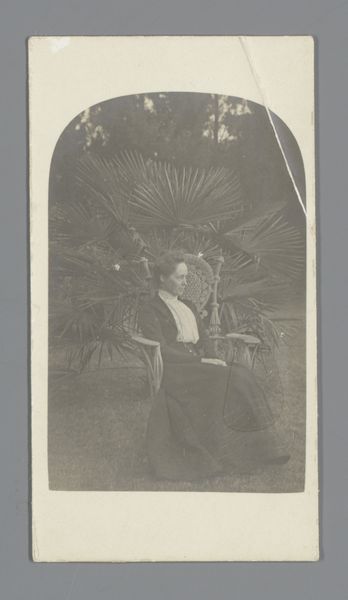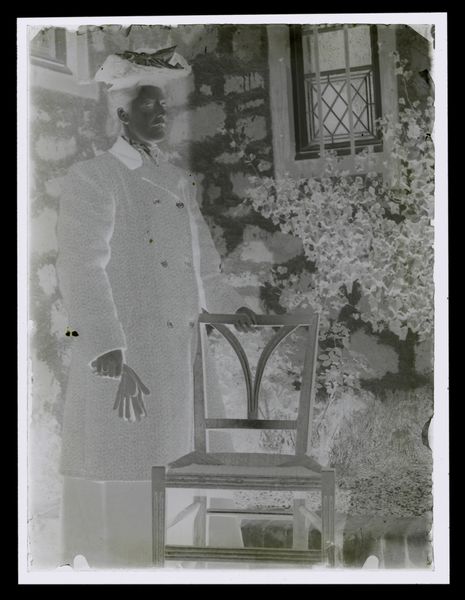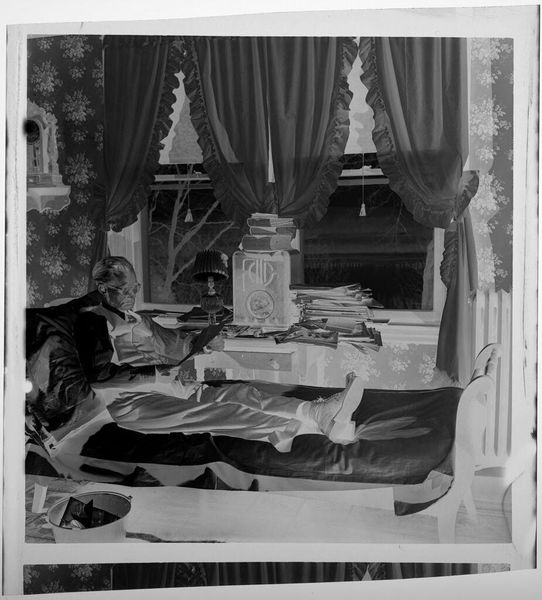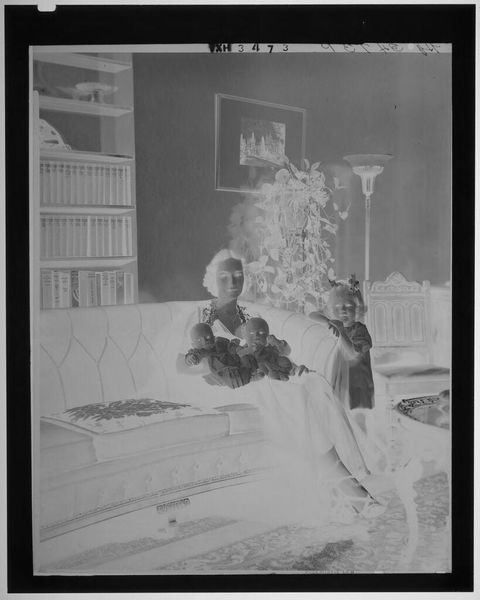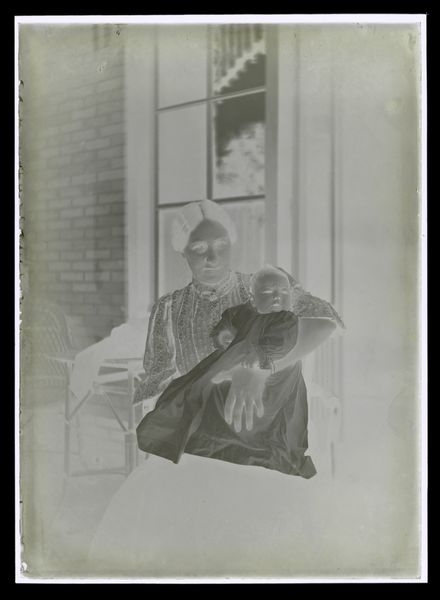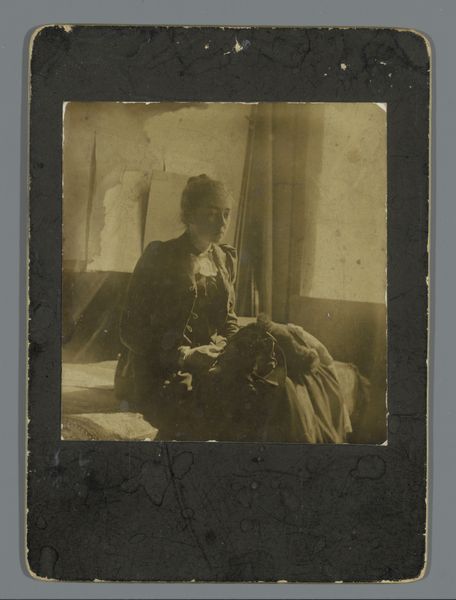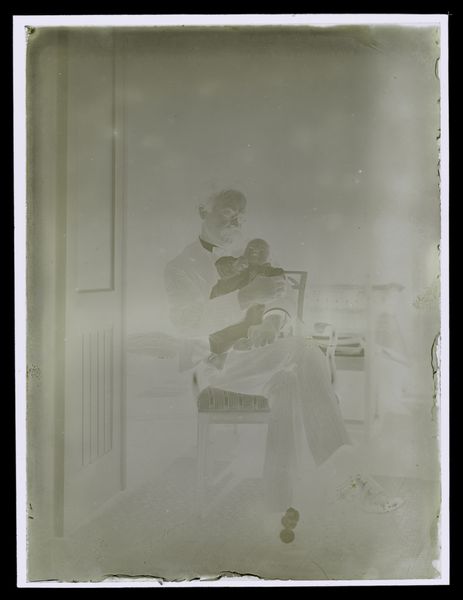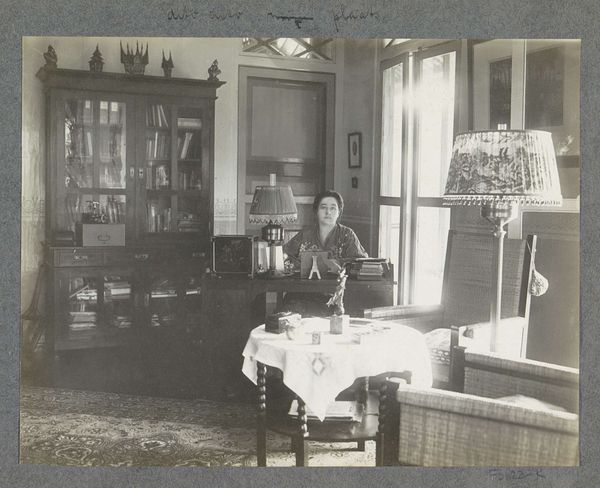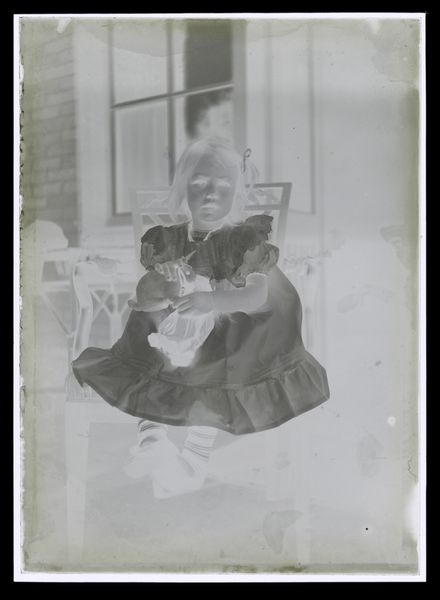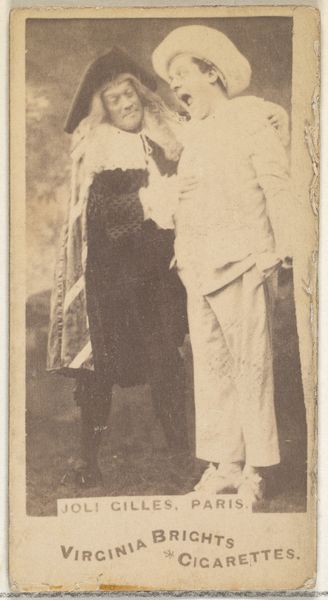
photography
#
impressionism
#
outsider art
#
street-photography
#
photography
#
genre-painting
Dimensions: height 120 mm, width 89 mm
Copyright: Rijks Museum: Open Domain
Curator: This photographic print is titled "Portret van een onbekend meisje dat buiten theedrinkt," which translates to "Portrait of an Unknown Girl Drinking Tea Outdoors." It's attributed to Laurens Lodewijk Kleijn and dates to somewhere between 1865 and 1900. Editor: My first thought is that there is a kind of haunted stillness to it. The inverted tones lend an ethereal, almost ghostly presence to the subject, especially her features and delicate tea set. Curator: Yes, and the tonal inversion might prompt thoughts about early photographic processes. This was a period of experimentation, as photography was quickly evolving into both a medium of documentation and a space for artistic expression, particularly through genre painting. What symbols jump out to you? Editor: Tea, of course, is an emblem of refinement, social ritual, and domesticity. But placed outside, surrounded by nature—note the hanging leaves near the upper frame, maybe this references the tension between the comforts of home and the allure of the natural world. Or, a woman in her own contemplative, personal space? Curator: It's fascinating how the surrounding foliage almost frames the subject, integrating her further with the setting. Kleijn was very keen on capturing outdoor scenes; however, he’s working at a time where we see photography developing its social and artistic consciousness, even beyond genre work. How did portraiture define social standing, and how are everyday people documented through photography? Editor: And what about the symbolism of the "unknown"? This absence of identification only reinforces the power of her archetypal representation of femininity. She transcends individuality and becomes an allegorical figure, representing something larger. Is she Everywoman, seeking a brief respite from life’s responsibilities? Curator: Well, what remains crucial to unpack is who held the keys to visibility back then. Was this "anonymous girl" someone rendered voiceless by social norms, captured on film, but nameless in history? Early photographers operated in particular milieus that valued very different models of image. Editor: Absolutely, and that’s the crux of its enduring mystery, isn’t it? The ambiguity forces us to consider our own assumptions, while the cup, window, table, and leafy elements offer a path into reverie, suggesting our capacity to see deeper. Curator: In a world awash with carefully curated self-representation, perhaps this forgotten image reminds us that silence and anonymity can speak volumes too. Editor: Exactly. It encourages us to engage in a narrative that history can write for us.
Comments
No comments
Be the first to comment and join the conversation on the ultimate creative platform.
